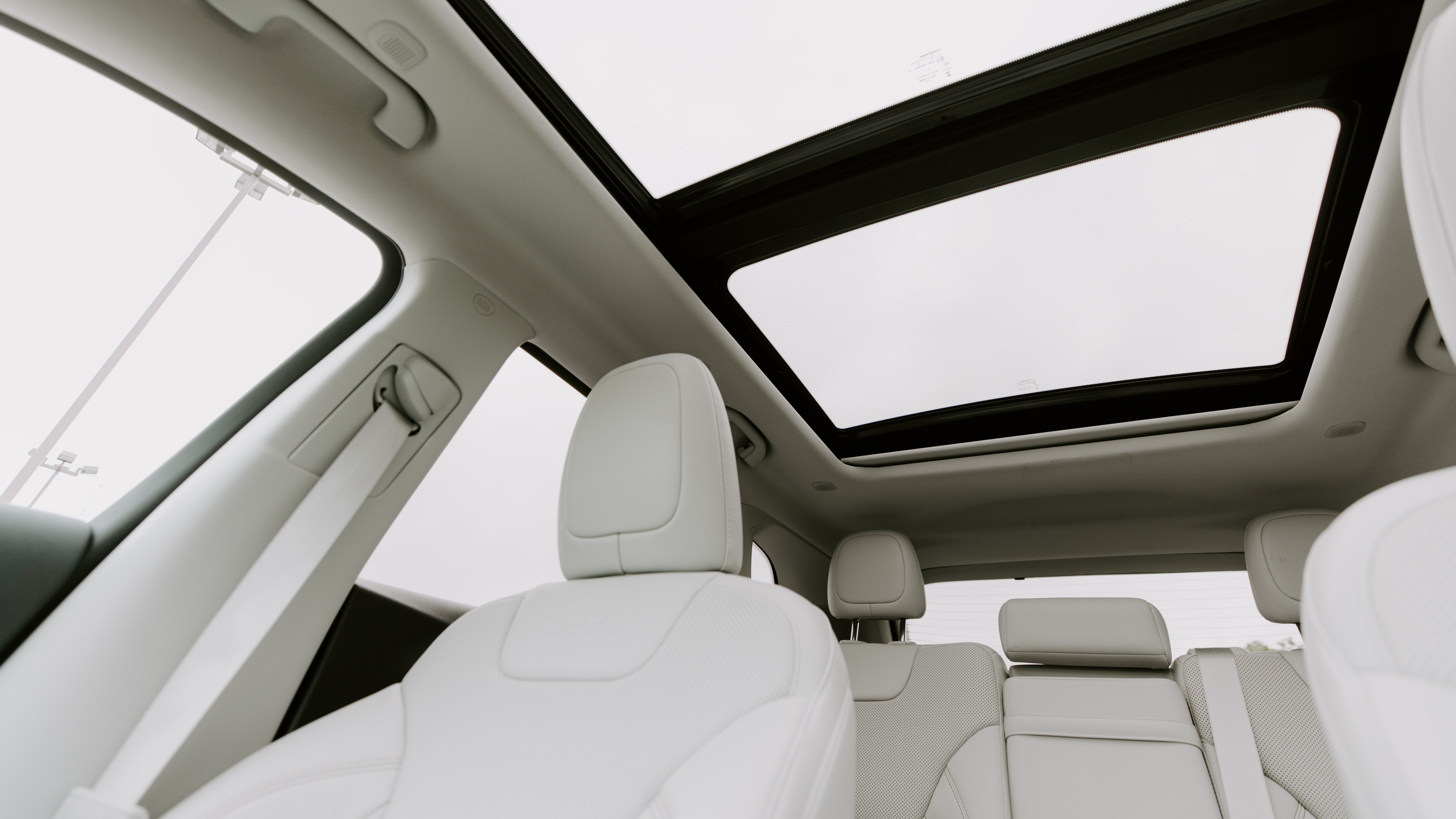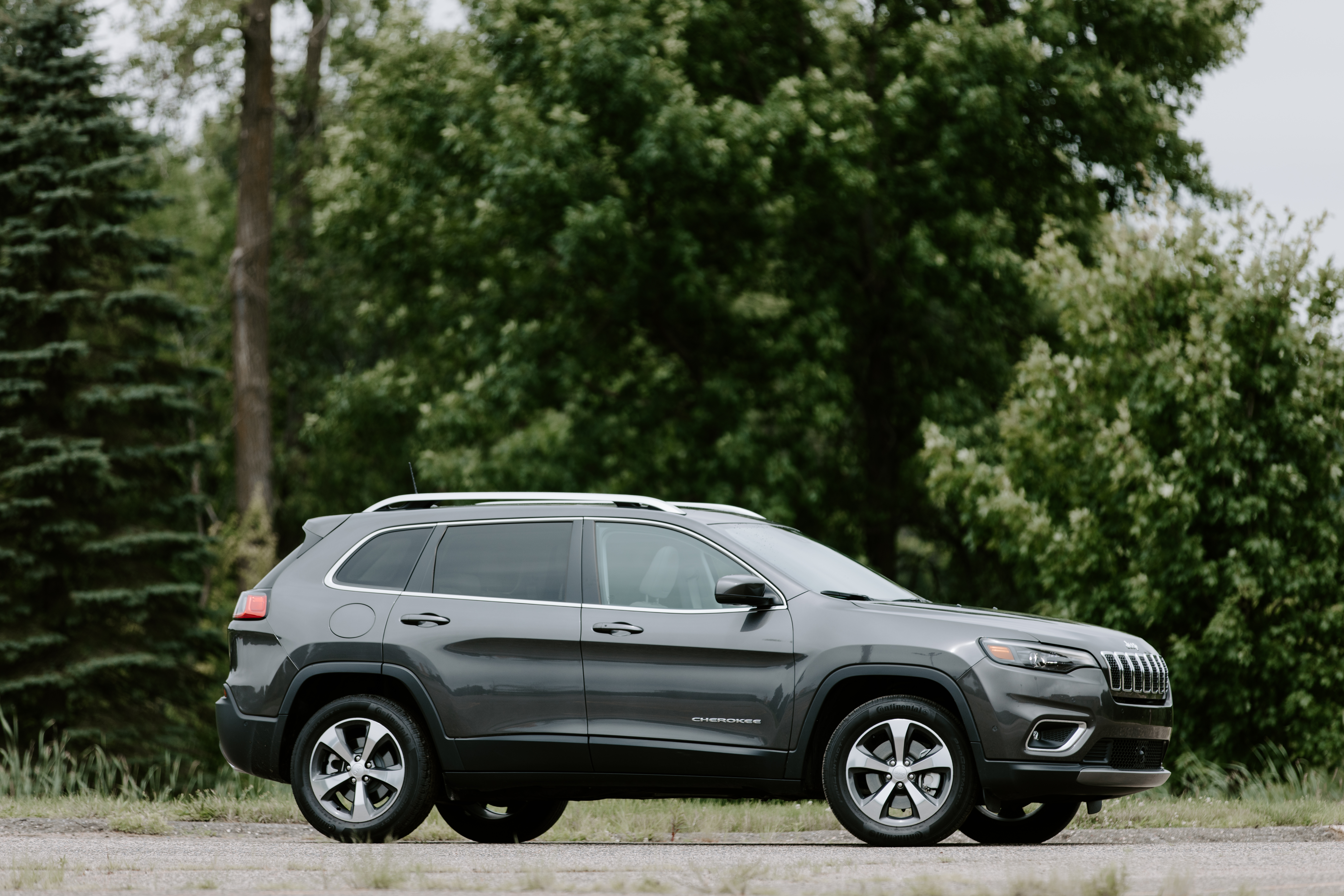The ultra-sensitive sensors on the 2019 Jeep Cherokee work like a charm
A small step towards a smart driving ecosystem

I knew something was up when my leaf blower triggered an alarm on a 2019 Jeep Cherokee. I was driving the rugged four-wheel-drive crossover into my garage, and passed a hair too close to the battery-powered lawn implement.
If you've ever driven a brand new car that doesn’t have a scratch on it, especially one with a base price of $25,740 (about £20,600, AU$36,500), you know it’s a bit scary to brush up against another car, a bike, or even a leaf blower.
The sensors are all around the vehicle (you can see them on the bumpers, for example) and are definitely not new. I recall testing cars seven or eight years ago with similar sensors that can monitor the proximity of other objects, including people and garage items. What I don’t recall is this level of sensitivity, which is adjustable on most vehicles including the Cherokee. No car has ever warned me about being too close to a leaf blower.





In another garage incident, I pulled in too close to a kid’s bike. The sensors warn you with chimes but also show a large image of the car in the instrument cluster above the steering wheel and bright yellow warning lights. They get your attention. I stopped, jumped out, moved the bike just in case, and pulled in. I won’t say it’s actual artificial intelligence – it’s just a sensor that sends out a signal and can tell when something is too close.
The reason this is more important than ever, though, is that the sensor tech in cars is now much more affordable. I imagine every production car will provide proximity sensors like the ones in the Cherokee soon. I know the LIDAR sensors used for self-driving cars from a company called Luminar cost around $500 (about £400/AU$700), which is far cheaper than anything we’ve seen before.
A sense of the future
There’s something to be said for public perception about automated tech in cars as well. I now expect a car to have proximity sensors, blind spot monitoring, and adaptive cruise, but most drivers these days are still adjusting to back-up cameras.
Most American drivers do not drive a different test car each week like me (sarcasm alert) or even buy a new car once every few years. Cars last much longer, and drivers are not purchasing as many new cars.
Sign up for breaking news, reviews, opinion, top tech deals, and more.
Sensors like the ones in the Cherokee will help. In everyday driving situations – at the mall, to church, with kids in the back – I now expect to hear the chimes and see the alerts in every car and I’m surprised when a vehicle doesn’t warn me.




In the future, sensors will become more common not just on the cars we drive but on everything else. The garage will communicate with the car as well, and the bikes and leaf blowers might even be connected to a sensor network someday so that we always know about any impediment or obstruction (or, I should say – the gadgets will know).
That’s when AI will come in handy, not just warning us in the moment about problems but warning us far ahead of time. “John, there’s a bike blocking the garage stall” is a message I’d like to receive, and maybe not even in the car but on my phone before I ever drive anywhere. Apply this sensor tech and network concept to autonomous cars, with an AI that knows which routes to take, any accidents on the road and other delays.
Then go much further and provide richer information – such as real-time and incredibly accurate traffic maps. I’m picturing an AI-controlled sensor net that makes driving much smoother and faster.
Whether that means a Terminator-like overlord is a question for another day...
On The Road is TechRadar's regular look at the futuristic tech in today's hottest cars. John Brandon, a journalist who's been writing about cars for 12 years, puts a new car and its cutting-edge tech through the paces every week. One goal: To find out which new technologies will lead us to fully self-driving cars.

John Brandon has covered gadgets and cars for the past 12 years having published over 12,000 articles and tested nearly 8,000 products. He's nothing if not prolific. Before starting his writing career, he led an Information Design practice at a large consumer electronics retailer in the US. His hobbies include deep sea exploration, complaining about the weather, and engineering a vast multiverse conspiracy.